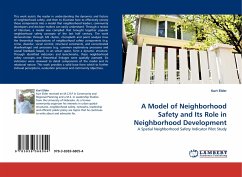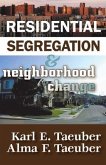This work assists the reader in understanding the dynamics and factors of neighborhood safety, and then to illustrate how to effectively convey those components into a model that neighborhood leaders, community developers and decision makers can easily understand. Through a review of literature, a model was compiled that brought together popular neighborhood safety concepts of the last half century. The work demonstrates through GIS cluster, choropleth and point analysis how the theoretical expectations of neighborhood safety components (e.g. crime, disorder, social control, structural constraints, and concentrated disadvantage) and processes (e.g. common explanatory processes and causal feedback loops), in an urban space, form a dynamic structure. Through identified indicators and benchmarks, these neighborhood safety concepts and theoretical linkages were spatially assessed. Six indicators were reviewed to detail components of the model and its relational nature. This work provides a solid base from which to further indivual perceptions, evaluation processes and community objectives.
Bitte wählen Sie Ihr Anliegen aus.
Rechnungen
Retourenschein anfordern
Bestellstatus
Storno








